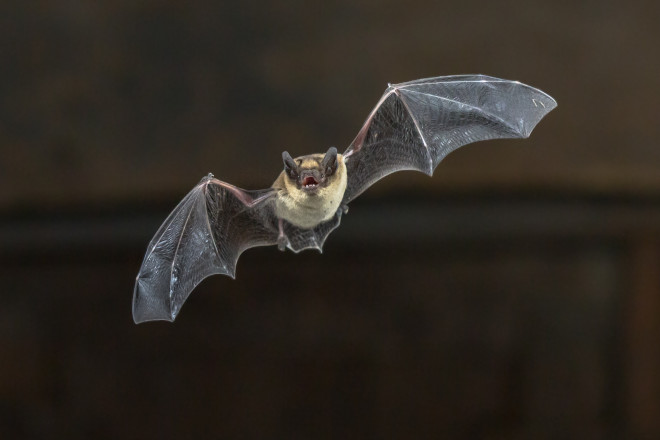Despite their spooky reputation, bats provide us with a valuable service. They eat loads of insects every night and fertilize the soil with their droppings. Culling mosquitoes keeps the insect population in check, which reduces their likelihood of spreading Lyme disease and West Nile virus. If you’re worried about the bats in your area, know that they do not attack humans. Call Bat Control for an inspection and bat exclusion service.
Bats in Ontario are nocturnal little carnivores that eat all kinds of flying insects. They feast on mosquitoes, flies, wasps, moths, and more. Contrary to popular belief, bats have sensitive vision that helps them see in the dark. They also use echolocation, which helps them find bugs in the air and catch them with precision. A hungry bat can feed on as many as 8000 bugs in one night, or roughly 10 bugs per minute. In general, bats eat a few hundred or thousand bugs per night. In the winter, when there are no bugs to eat, bats hibernate in their roosts.
What to Do if You See Bats on Your Property
Bats are common in cottage country and anywhere near the wilderness. They may even be seen in cities where there are forested areas and old attics for the animals to roost. Bat habitats suffer from deforestation, and their colonies are susceptible to disease. As a result, bats are a protected species in Ontario. If you notice any of the following signs, contact a wildlife technician for humane removal.
- Bat guano: Bat droppings, or guano, look a lot like mouse droppings. They are small and dark, similar to a black grain of rice. Bat guano however is shiny because it contains insect parts, like wings. Finding piles of guano in the attic, beneath the rafters, is a clear sign of a bat invasion. You may also find guano on the outer walls of the home near the bats’ entrance to the attic.
- Smudge marks on the wall: Bats crawl into attics via holes in the wall. If you see a greasy smudge mark on the edge of a gap in the soffits or siding of the house, this may be where bats are getting into the house. Rubbing their bodies against the edges of the entry point repeatedly creates this mark.
- Noises in the attic: Bats are extremely quiet, but in some instances, a bat may fall from its perch or fall into a wall void and flap its wings. If you hear any strange noise in the attic, you should call a wildlife removal company for an inspection. It’s probably not a ghost!
- Seeing bats in the house: If there was ever a bat in your home, the rest of the colony is nearby. Bats are social creatures that live in large groups. A bat that flew into the house may have gotten lost and went inside your living space when it meant to go into the attic.
Call a local wildlife removal company for help and a technician will confirm the presence of bats. Then, he or she will install a one-way door to the bats’ entry point. This will let the animals out safely while preventing their re-entry. While simple in theory, it is important that you call a professional. A technician can determine when it is safe to evict the animals and exclude your property so that this does not happen again. If you want to provide the bats with a new habitat, check out bat houses and consider installing one on a tree in the yard.
